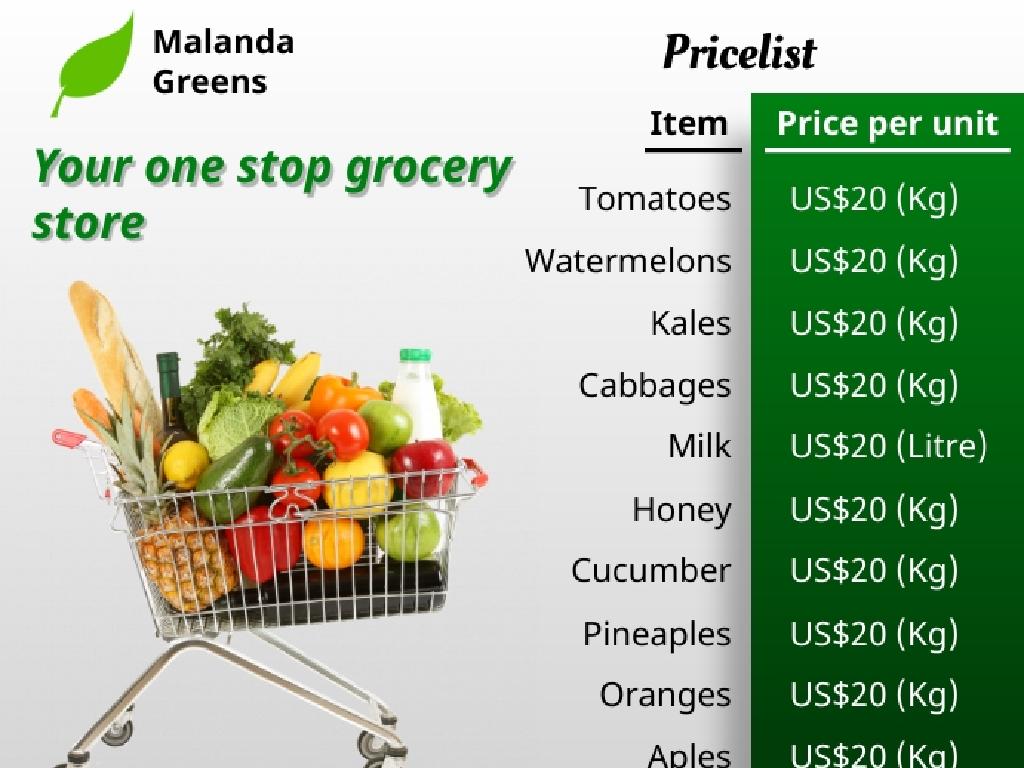Show Numbers With Cubes - Up To 7
Subject: Math
Grade: Kindergarten
Topic: Numbers And Counting To 7
Please LOG IN to download the presentation. Access is available to registered users only.
View More Content
Welcome to Numbers with Cubes!
– Greet our little mathematicians
– Learn numbers using cubes
– Cubes help us visualize numbers
– Counting cubes up to 7
– We’ll stack cubes for each number
– Fun with numbers and cubes
– Games like ‘Cube Towers’ make learning fun
|
This slide is designed to introduce Kindergarten students to the concept of numbers and counting using a tangible method cubes. Start the lesson with a warm greeting to engage the students and create a friendly atmosphere. Explain that cubes can be used as a visual aid to understand and learn about numbers. Demonstrate counting from 1 to 7 by stacking cubes, allowing the students to see the quantity each number represents. Incorporate interactive activities such as building ‘Cube Towers’ where students stack the corresponding number of cubes for each number up to 7. This hands-on approach helps solidify their understanding of numbers and counting in a playful and enjoyable manner.
What Are Numbers?
– Numbers help us count
– Numbers are used daily
– Showing numbers with fingers
– Can you show 1 finger? That’s number 1!
– Practice counting to 7
– Let’s use cubes to count from 1 to 7 together
|
This slide introduces the concept of numbers to Kindergarten students. Start by explaining that numbers are a way to tell how many of something we have. They are used every day to count objects, tell time, and even when we play games. Engage the students by asking them to show one finger and explain that this represents the number 1. Then, transition to using cubes to show numbers up to 7, allowing the children to visualize and physically count. Encourage the students to participate by showing the corresponding number of fingers or cubes as you count together. This tactile approach helps reinforce their understanding of numbers and counting.
Counting with Cubes Up to 7
– Cubes represent numbers visually
– One cube equals one number
– Stacking cubes shows number size
– For example, 3 cubes stacked is the number 3
– Practice with cubes up to 7
– Let’s stack 1 to 7 cubes and count together
|
This slide introduces the concept of using physical objects, such as cubes, to represent numbers and help with counting. Each cube represents one unit, and by stacking them, children can visualize the quantity they represent. The activity involves stacking cubes from 1 to 7 and counting them aloud, which helps reinforce number recognition and counting skills. For the class activity, provide each student with a set of cubes and guide them through the process of stacking and counting. Encourage them to touch and count each cube, reinforcing the one-to-one correspondence between the number and the quantity it represents. This tactile experience is crucial for kinesthetic learners in kindergarten.
Learning Number 2 with Cubes
– Let’s stack two cubes together
– One cube on top of the other, like a tiny tower!
– Visualizing the number 2
– Two cubes side by side show us what ‘2’ looks like.
– Find 2 items in our classroom
– Look around to spot any pairs of things, like 2 crayons.
|
This slide is aimed at helping Kindergarten students recognize and understand the number 2 by using a hands-on activity with cubes. Start by demonstrating how to stack two cubes, one on top of the other, and then place them side by side to show the number 2. Encourage the children to visualize the number by looking at the cubes. Afterward, engage the students by asking them to find pairs of items in the classroom, which reinforces the concept of the number 2. This activity not only teaches counting but also helps with number recognition and understanding the concept of pairs. Make sure to walk around the classroom to assist and praise the students as they complete the activity.
Learning Number 3 with Cubes
– Counting up to 3 with cubes
– Stack 1, 2, 3 cubes together
– Relate 3 to everyday items
– Think of 3 toys or books you love
– Discuss 3 favorite foods
– Apples, cookies, carrots? Share with us!
|
This slide is aimed at helping Kindergarten students understand the concept of the number 3 by using visual and tangible aids like cubes. Start by stacking one cube and then adding one more at a time until there are three. Ask the children to count along with you as you stack the cubes. Then, relate the number 3 to things in their daily lives by asking them to think of three items they like, focusing on foods for this activity. Encourage them to share their three favorite foods with the class. This activity helps to solidify their understanding of the number 3 through association with familiar objects and encourages participation and discussion.
Counting Cubes: Numbers 4, 5, and 6
– Adding cubes for number 4
– Four cubes in a small tower
– Stacking cubes to make 5
– Add one more to make a tower of 5
– Building up to 6 with cubes
– Now let’s make a tower of 6 cubes
– Practice clapping 6 times
– Clap hands for each cube in the tower
|
This slide is designed to help Kindergarten students visualize and understand the numbers 4, 5, and 6 through the use of physical cubes. Start by showing them how to stack four cubes, then add one more to make five, and another to reach six. Encourage the children to count aloud with you as you add each cube. After building the number with cubes, engage the students in a physical activity by asking them to clap their hands six times, reinforcing the number six. This kinesthetic activity helps solidify their understanding of the quantity associated with the number. For the activity, consider having different sets of cubes available for each student to build their own towers, and provide assistance as needed. Other possible activities include matching the number of cubes to written numbers, or finding groups of items in the classroom that match these quantities.
Lucky Number 7: Counting with Cubes
– Number 7: Our biggest number today
– Seven is one more than six, and it’s the number we’re learning now!
– Visualize 7 with cube stack
– See how high we can stack the cubes? That’s seven!
– Jump 7 times to count
– Let’s get moving! Each jump counts as one cube.
|
This slide is designed to help Kindergarten students visualize and physically engage with the number 7. Show them a stack of 7 cubes and explain that 7 is one more than 6. Encourage the children to count along as you point to each cube. Then, involve them in a physical activity by having them jump 7 times, counting out loud with each jump. This kinesthetic approach helps reinforce their understanding of the number 7. Make sure to provide positive feedback and cheer them on as they count and jump. For students who finish quickly, challenge them to find 7 objects in the classroom or draw 7 items on paper.
Class Activity: Build with Cubes
– Build numbers using cubes
– Make numbers 1 to 7
– Use your cubes to show numbers
– Stack cubes to represent each number
– Show your cube numbers to the class
– Display your cube stacks for everyone
|
This activity is designed to reinforce the concept of counting and number recognition up to 7. Provide each student with a set of cubes and ask them to build a visual representation of each number from 1 to 7. Encourage creativity in how they choose to display the numbers. Possible activities include: 1) Building a tower for each number, 2) Lining cubes up in a row, 3) Creating shapes that correspond to the number of cubes, 4) Grouping cubes by color to represent different numbers, 5) Asking students to find the number of cubes that matches the number of items in a picture. This hands-on approach helps solidify their understanding of quantity and number representation.
Review and Goodbye: Counting Cubes
– Excellent work with cube counting!
– Recall numbers one to seven
– Count together from 1 to 7
– Let’s count: 1 cube, 2 cubes, up to 7 cubes!
– Wave goodbye with our number knowledge
|
This slide is meant to wrap up the lesson on counting with cubes. Start by praising the students for their hard work during the lesson. Encourage them to remember the numbers they’ve learned by counting out loud from one to seven. As you count together, hold up the corresponding number of cubes for each number to visually reinforce the concept. This interactive recap will help solidify their understanding of numbers and counting. End the lesson on a positive note by having the students wave goodbye, acknowledging their progress in learning numbers with a fun gesture.

/civil_war_history_materials.jpg)




